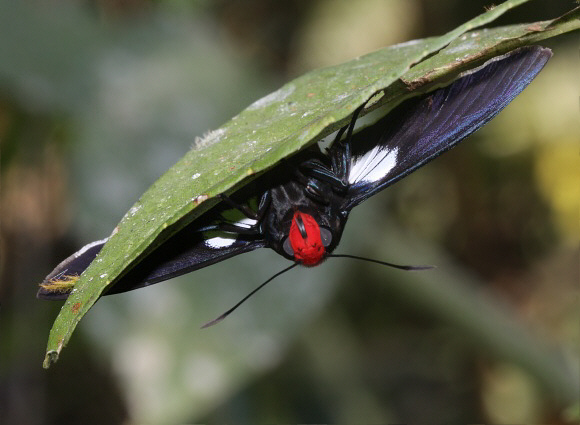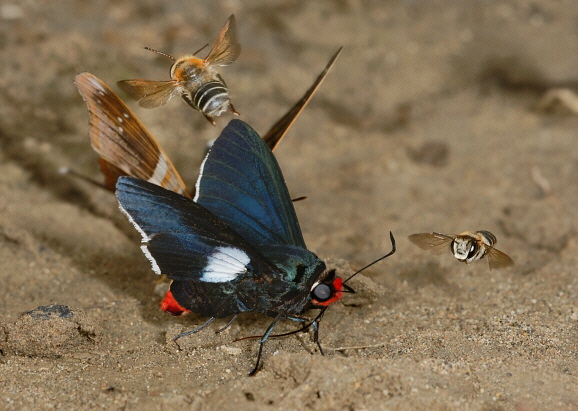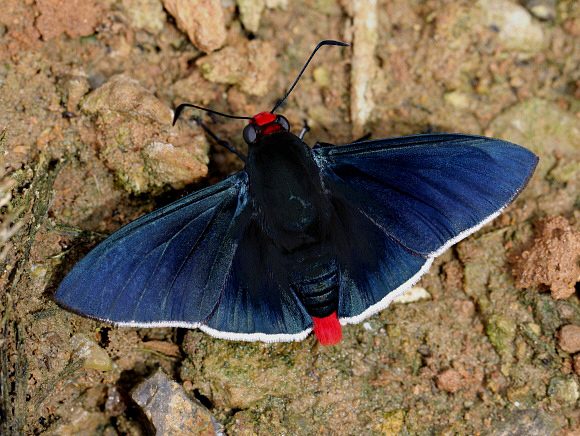
Introduction
The subfamily Pyrrhopyginae comprises 163 known species, most of which are found only in the tropical rainforests and cloudforests of South America, although a few reach as far north as Mexico, and a single species reaches Arizona. They are characterised by having bodies which are very large in proportion to the wings. Other characteristics include a massive muscular thorax, compressed abdominal segments, prominent eyes, and antennae with recurved clubs.
Several genera including Jemadia and Elbella have a pattern of hyaline “windows” on the forewings, and are marked with stripes and bands of brilliant blue and white. Other genera such as Mysarbia, Mysoria and Pyrrhopyge lack the hyaline windows, and are characterised instead by having bright pink or red markings on the head and / or on the tip of the abdomen.
The 38 Pyrrhopyge species are all similar in appearance, having a black ground colour and white or orange outer margins. In bright lighting conditions the wings reflect a metallic sheen which varies in hue from green to blue according to angle of view. In most species the head and tail are both bright red or orange. In several species such as telassina there are orange shoulder-stripes on the thorax. In a few species including phidias, evansi, proculus, pusca, amathaon and thericles the basal area of the underside hindwings is white.
Pyrrhopyge phidias occurs throughout the tropical zone of South America, from Colombia to Bolivia and Paraguay. It has 11 named subspecies.

Habitats
Pyrrhopyge phidias occurs in lowland rainforests and transitional rainforest / cloudforest habitats, at altitudes between about 200-1800m.
Lifecycle
To be completed.
Adult behaviour
Males of this species are often seen on the ground imbibing mineralised water from wet rocks, small pools, or at the edges of rivers or lagoons. They are usually seen singly, but sometimes 3 or 4 will congregate to feed at bird droppings on the forest floor.
When settling to feed they initially hold their wings erect, but after a few moments spread them flat, particularly in cloudy or hazy conditions. If disturbed they usually dart up, circle around a nearby tree and settle on its foliage until such time as they feel it is safe to return to their feeding place.

